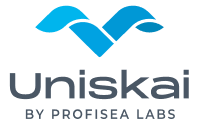How to Leverage DevOps for IT Cost Optimization
Stating the obvious here, but 2020 was a hard year for everyone at best. Continuity and resiliency of businesses worldwide have suffered because of the rapid unanticipated changes and economic collapse. Numerous companies faced massive layoffs, revenue drop, and the need to cut costs while maintaining their operations up and running.
However, some found the most efficient way to fight back the COVID-19 disruption. They reduced their IT costs through robust DevOps, cloud optimization, and automation of manual tasks. Virtualization and DevOps practices became life-savers for enterprises in various industries, allowing them to cut operating expenses for development, testing, deployment, and maintenance.
So, today Profisea shares useful tips to help you grow your business with DevOps while actually saving money and effort.
Why should you turn to DevOps to reduce costs and streamline operations?
There are top five reasons:
- Business processes automation increases enterprise-wide operational efficiency and resiliency.
- DevOps cycle itself essentially decreases costs by reducing engineers’ manual work and shortens time to market. It enables your teams to build, test, and deploy faster and with fewer errors.
- Fine-tuned CI/CD pipelines reduce redundancy for your teams and make your business more agile and flexible.
- Automated cloud infrastructures allow achieving sustainable cost reduction by optimizing the usage of cloud resources. With a cloud-native architecture, you can scale up and down cloud consumption on-demand.
- You can leverage DevOps as a Service (Managed DevOps) outsourcing model. It helps automate delivery processes, create cloud environments, improve team collaboration and productivity while paying far less than when doing it all in-house.
Gartner forecasts that global spending on IT areas to reach $3.8 trillion in 2021, an increase of four percent from 2020. Thus, the demand for maintaining the appropriate budget for all things related to software development will also be higher than ever. The world keeps transitioning into remote and hybrid work mode as the new normal — everything will depend on the quality and robustness of enterprise digital transformation initiatives.
Future software engineering will focus on even more agile release cycles, hyperautomation, remote collaboration tools, and continuous improvements across all development processes. DevOps and cloud computing will play key parts in building standardized and consistent build-test-deploy environments, where the teams are enabled to react to any changes promptly and efficiently.
How DevOps Optimizes IT Costs
Here is a quick guide on leveraging DevOps best practices to gain full control over your IT expenditures.
#1 Automate everything you can — CI/CD, business processes, and infrastructure
Yes, to save costs, you first need to invest some money in automation that has proven its effectiveness in reducing costs long ago. So, you’ll need to automate CI/CD pipelines, manually controlled operations, databases, servers, and other ecosystem elements, and implement the Infrastructure as Code (IaaC) approach. It’ll relieve your engineers from the need to provision IT infrastructure and manage all its components manually every time they build, test, or deploy software.
Instead, CI/CD processes and the whole infrastructure will be transformed into a customizable and scalable automated framework. Such a framework consists of the pre-set templates, protocols, and controls that allow your developers to configure existing services or launch new ones within minutes. IaaC model also lets you set the same configuration to one node or to thousands of them, avoiding vast amounts of repetitive work.
Subsequently, the IaaC approach also enables business processes automation (BPA) by eliminating mundane, routine, but still important tasks. They won’t be skipped, but they will be automated and won’t be demotivating your developers ever again, thanks to the DevOps practices. With BPA, you’ll receive a highly efficient workflow with more time for QA and testing, which will boost your team’s productivity and lower expenses for rework.
#2 Don’t neglect third-party services and software
You can easily reduce company operating overhead expenses by using third-party SaaS providers like AWS or Azure clouds, Elastic managed services, and others. For instance, building a managed database from scratch is also time-consuming and expensive. Luckily, an expert DevOps team can provide you with the most cost-efficient, ready for use service (e.g., Amazon RDS).
Using such an approach, you’ll pay only for the resources you actually use during an outlined period of time. Third-party managed service providers offer various packages with computing and storage capabilities based on your business goals. As the pandemic pushes companies to stop growing their workforce and avoid substantial investments, leveraging third-party services is a win-win strategy.
#3 Optimize tools and resources
In most cases, your budget is blown up by poor management of a wide range of DevOps applications and resources your team uses daily. Hence, a good idea is to take an inventory to analyze all your instruments and re-develop legacy infrastructure if needed to cut its costs. Then, create an optimization roadmap to choose the suitable capabilities, instances, management tiers, and optimal payment options for each tool. Managing your cloud usage is essential to avoid sprawl.
The roadmap can include such actions as:
- Analyzing the consumption of subscription-based services and their relevance;
- Using discounts from a service provider;
- Setting automatic hibernation/system shutdown for machines you don’t need running 24/7;
- Choosing the right type of instance for cloud resources and deleting underused instances;
- Moving the occasionally used storage to cheaper tiers;
- Implementing alerts for when spend thresholds exceed the pre-established limit;
- Checking up if hosting in a different region/zone can benefit your project.
Finally, train your staff to appropriately manage all the resources and implement policies that enforce limitations and usage requirements. It’ll help you control IT spending and gain maximum efficiency from your toolchain while significantly optimizing costs.
#4 Containerize your applications
Container-based development eases application hosting and streamlines collaboration between all team members. Containers accelerate building, testing, and deployment environments, making user experience always consistent. When your software is containerized, it also simplifies the process of updating it without disrupting service.
This approach lowers expenses needed for keeping your resources up and running, and inside containers, you can operate applications developed in any language. This, in turn, allows your teams to switch between different programming environments fast and without losing productivity.
#5 DevSecOps — cover your security gaps
In our times, when businesses move to all things remote, your company’s cybersecurity is a top priority. Enforcing robust security policies and protocols for both employees and users is critical. If those policies aren’t followed, it can cost you a lot. DevSecOps approach is a rising star in the IT field that allows you to detect any exposable flaws in your enterprise data safety measures. And do everything necessary to remove vulnerabilities before any breach happens.
#6 Try out DevOps as a Service
This outsourcing delivery model provides turn-key consulting and engineering services from audit and strategy planning to project infrastructure assessment and development actions. DevOps managed service providers can help you grow or shut down SDLC areas according to your operational needs. Simultaneously, usage of on-demand, budget-friendly DevOps services can free your in-house full-time employees to focus on delivering better value to more strategic tasks.
External DevOps experts will handle all tasks related to requirements clarification, identifying risks and opportunities, creating architecture, implementing automation and IaaC, and more. Instead of doing it yourself, you’ll get a comprehensive roadmap designed by professionals or even the core infrastructure with configured pipelines fully ready for support management and scaling.
Four actions to take to start optimizing your IT costs with DevOps
- Audit your processes, business goals, and resources to get a clear picture of what you’re using and what your operating expenses are. Then, initiate business impact analysis to discover the bottlenecks and map out the risk scenarios, seasonal lows and highs.
- Create a plan for your optimization journey and risk mitigation — define the problematic areas and the ways to improve them with the DevOps practices.
- Implement the changes and adapt your architecture. Assess your new capabilities and monitor your new stream of IT costs to see if the planning was successful and if there are any gaps you overlooked.
- Continue improving your optimization cycle — look for new services and tools that will help you reduce expenses even more while maintaining your infrastructure’s highest productivity.
Starting 2021 with a Bang!
DevOps future looks brighter than ever, considering an increasingly fragmented, hybrid work culture that awaits us in the coming decade. The benefits of using DevOps for business growth are almost limitless. Alongside reducing time, money, and effort required for software development processes, agile DevOps practices eliminate bottlenecks in various fields. From automated infrastructure provisioning and cloud migrations to legacy systems updates and security issues.
Profisea’s DevOps team in Israel can help you navigate through the automation journey. Our engineers will provide the best end-to-end cloud cost optimization solutions and fine-tune your infrastructure to run on-demand while meeting all your project’s goals. Consequently, Profisea’s dedicated services will free your time and budget for other business-focused purposes.
With Profisea’s DevOps as a Service model and internal tool for cloud resource visualization, you’ll pay only for what you use at a particular time. Outsourcing DevOps services from a trusted provider will cost you far less than setting it all in-house or manually. We’ll implement DevOps practices and tools to create highly advanced, extensively scalable environments for you.
If you have some exciting insights to share with us or would like to discuss the described trends, reach out to us! Our DevOps experts are always ready to provide free consultations.




